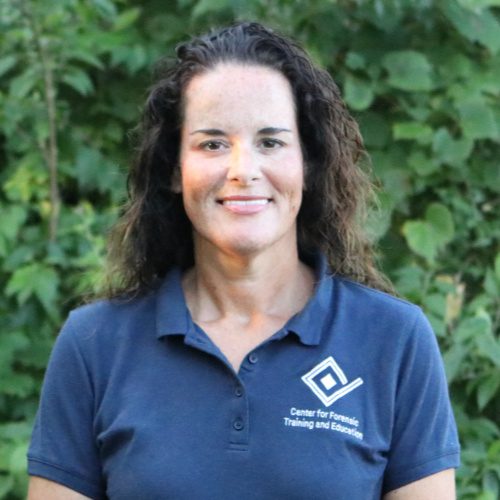It’s All About Balance

During a recent workshop one of the handlers asked me how I divided my time between water, disaster and land/wilderness HRD. I’ve been doing it so long I don’t spend much time consciously thinking about it anymore, but the truth is, it’s a balancing act.
I firmly believe that a dog is capable of doing all three but that doesn’t mean EVERY HR dog is. If you ever attend a workshop where I am an instructor, there is a good chance at some point I will take a hard stand on this point. I love training dogs, I am blessed to be able to travel across the country and work with amazing dogs and handlers, I enjoy it and have fun doing it. However, I never lose sight of the seriousness of our work.
What we do can be dangerous; for us, our dogs, and the other responders on scene. When I make a recommendation to an incident commander based on my dog’s search it will influence where he places divers, rescue techs, and other resources depending on the type of search. My recommendations are placing LIVE rescuers in potentially dangerous situations.
The weight of that responsibility is with me every time I train and is one of the driving factors in my need to continue to learn and improve my skills as a handler and trainer. It is also why I am adamant in my belief that if you don’t train for it, and certify for it, you shouldn’t be responding to it. For example, if you don’t train for open water and carry a certification for open water, you have no business responding to a drowning and working from a boat. There is too much at stake and I am not willing to risk my fellow responders’ safety by making a recommendation on a search I am not qualified to respond to.
SELECTION
It starts with selection. Envision exactly WHAT you want to use your operational dog for. It will largely depend on your organization. If you live in a dessert location, water recovery may not be a high priority for you, or if you plan to cross train your dog since your team frequently responds to missing hikers, then disaster may not be a priority. I encourage handlers to think carefully about what you want to accomplish with your partner BEFORE selecting a new puppy or dog.
Early in my K9 SAR career I wasn’t focused on disaster recovery more than being able to respond on a local level after a tornado or structural fire. I made sure to meet training requirements, NIMS guidelines, and maintain a national disaster certification but it wasn’t my top training priority. In those early days I worked larger, longer backed, golden retrievers that had were outstanding workers and could just have easily been successful in the confirmation ring.
In 2012, I joined OH-TF 1 and knew I wanted to continue working Goldens but reevaluated the type of Goldens I was working. I selected a puppy from a hunting kennel, whose focus was strictly on producing the best hunting dogs. Hunting line Goldens tend to be smaller, lighter, faster, more agile, not as heavy boned, have a shorter back. All of these qualities are important for the success and longevity of a FEMA disaster dog.
STRATEGY
I select my K9 partners as puppies and bring them home at about 8 weeks old. I have a long-range plan for the puppy before it ever enters my house.
The puppy is a resource and ultimately, I want to maximize the effectiveness, reliability and longevity of the resource. My strategy focuses on moving the puppy through age appropriate training so that I can meet the following benchmarks:
- 12-18 months – challenge a nationally recognized land HRD certification. By this point the puppy has at least 10 months of training. It is the least physical challenging and can largely be done on level ground without requiring too much stress on still growing puppies.
- 18-24 months – challenge the FEMA HRD certification. The puppy/dog has been working on rubble for at least a year by this point gradually increasing the technical difficulty and physical demands as appropriate based on physical and mental development.
- 24-30 months – challenge a nationally recognized water certification that includes both open water and shoreline. I choose to focus on water last because I feel that open water training is the most mentally challenging and takes a level of patients that takes time for a dog to develop. I start puppies on shoreline around 6 months and open water between 8-12 months, but I don’t rush the process.
Notice I say challenge the certification. I challenge a test with the intent of passing each of these certifications but even the best teams can have an off day and fail a certification or assessment. The purpose of the schedule is to set benchmarks in training. I’m not going into a certification unless I know I have put the time in and the dog is ready to meet the challenge. It’s my job to keep the puppy progressing through training toward these goals, knowing there will be setbacks and challenges along the way, but still moving forward toward the goal.
BALANCE
For me it is important to have dogs that are capable of deploying for land, water and disaster because we respond to all of these types of searches on a regular basis. Once we pass certifications and become operational that’s when the challenge really kicks in. I vary how much time is spent during any given month on land, water and disaster based on the time of year and what types of search requests we typically receive during that month.
Our organization tends to see cycles in search requests. It is highly likely that on or around Memorial Day we will receive a water search request. Winters are long here and when the weather breaks people are itching to get out on the water. This means that we need to get the dogs out on the boats at least a few months prior to this to make sure they are back up to speed on their boat work. As a disaster handler, I pay close attention to the approach of tornado and hurricane seasons. Leading into these times I make sure to regularly work the dogs on large, fresh sources. Since we work a high number of crime scenes each year, it is also important to make sure the dogs are frequently exposed to smaller odor sources such as trace and dry bone.
TRAINING LOGS
I find that the most effective way to stay on top of my training is regularly analyzing my training logs. It’s not enough to fill out those paper or digital forms. You need to sit down and actually analyze the data you are collecting. I try and do this monthly so I don’t let any one area slide, but at the very least you should try and review your logs quarterly. Time passes so quickly, if you aren’t reviewing exactly what you have been training its easy miss something and before you know it six months have passed and you haven’t done even one vehicle search!
If you are looking for a training log template that is easy to use and meets industry best practices, check out our HRD Training Log Template.
BRINGING IT ALL TOGETHER
Dogs are capable of doing land, water and disaster effectively but like I said earlier, that doesn’t mean every HR dog is capable or that every HR dog needs to do all of these. I’ll be honest it can be a challenge as a handler to maintain an operational dog in all of these areas. It takes time, commitment, a variety of training sites and resources.
You can take a few steps that will make the process easier and reduce stress on both yourself and your dog.
- Select the right dog for the job. A large dog with questionable agility isn’t the ideal candidate for a disaster dog but may be fantastic at wilderness work. Don’t demand something of the dog that they aren’t physically or mentally capable of.
- Have a long-term training plan with benchmarks and goals to make sure your dog is progressing through its training at a reasonable pace. Remember these dogs are valuable resources but unfortunately have limited working lives, if you take five years to get a dog to operational status it will have a very short career.
- Once you have an operational dog you don’t get to relax your training. Now is the time to step it up and really challenge you dog! Make sure you are focusing your training on the types of searches you are regularly requested for. Take time each month to analyze your training logs to identify any gaps in your training.
- Always remember your responsibility as a handler. Train for the types of searches you are requested for. If you are not adequately trained you will be placing yourself and your dog in danger and your recommendations can place other responders in dangerous situations. Make sure you are qualified to be making those recommendations!
 Deana Hudgins, CFTE Founder, has been working in Search and Rescue since 2002. She is the Executive Director and a Founding Member of Ohio Search and Recovery Canines. She is also a Canine Search Specialist for FEMA Ohio Task Force 1 working both human remains detection and live find canines. She has traveled the country as an instructor, evaluator, and facilitator for search and rescue classes and workshops. Deana specializes in human remains detection; water, land and disaster, as well as wilderness and disaster live find. She has responded to hundreds of missing person searches for local, state and federal agencies. She frequently consults as a subject matter expert for large scale training exercises and cases, providing guidance in search strategy and planning, resource management, mapping and data collection. During her years as an instructor, Deana repeatedly saw that there was a lack of resources and training opportunities to fully prepare agencies to respond to search and recovery missions. She established the Center for Forensic Training and Education to ensure that any organization involved with the search and recovery of missing persons has access to real world, hands on, custom training opportunities.
Deana Hudgins, CFTE Founder, has been working in Search and Rescue since 2002. She is the Executive Director and a Founding Member of Ohio Search and Recovery Canines. She is also a Canine Search Specialist for FEMA Ohio Task Force 1 working both human remains detection and live find canines. She has traveled the country as an instructor, evaluator, and facilitator for search and rescue classes and workshops. Deana specializes in human remains detection; water, land and disaster, as well as wilderness and disaster live find. She has responded to hundreds of missing person searches for local, state and federal agencies. She frequently consults as a subject matter expert for large scale training exercises and cases, providing guidance in search strategy and planning, resource management, mapping and data collection. During her years as an instructor, Deana repeatedly saw that there was a lack of resources and training opportunities to fully prepare agencies to respond to search and recovery missions. She established the Center for Forensic Training and Education to ensure that any organization involved with the search and recovery of missing persons has access to real world, hands on, custom training opportunities.

